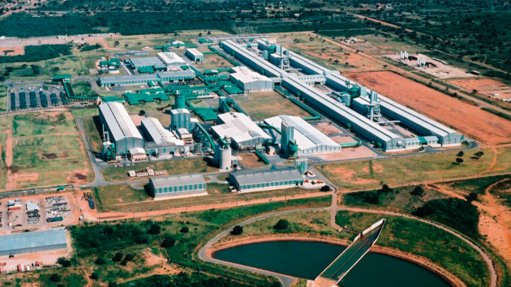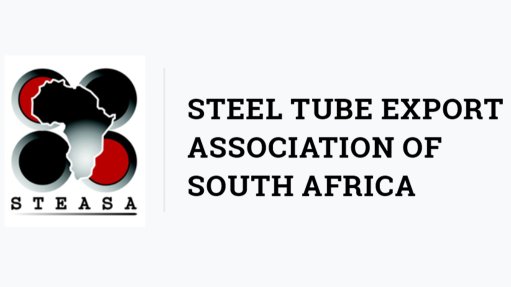Continued volatility impacts on energy and chemicals company


RECORD PRODUCTION Sasol showed great resilience and character through delivering record production volumes at Secunda Synfuels
Photo by Bloomberg
Continued volatility in the macroeconomic environment, particularly the stronger rand and low oil price, has adversely impacted on energy and chemicals company Sasol’s financial performance, says Sasol CFO Paul Victor.
As reported in its June 2017 financial statement, he notes that oil prices traded at an average of $50/bl on the back of geopolitical factors and that the rand:dollar exchange rate strengthened as global macroeconomic dynamics overshadowed increased domestic political and economic risks.
“To mitigate the impact of financial risks on our business, we entered into various hedging contracts to protect the company against volatility in commodity prices, currencies and interest rate changes,” he explains.
Against this backdrop, he enthuses that the company showed great resilience and character through delivering record production volumes at Secunda Synfuels of 7.83-million tons, as well as increasing production from the company’s Eurasian Operations by 6%, owing largely to management turnaround programmes to increase the efficiency of operations.
Increases in Sasol’s cash fixed costs were contained to below inflation in nominal terms since 2014, despite additional costs of over R1-billion from the strike at Sasol’s mining business unit.
Victor further enthuses that Sasol also achieved its Business Performance Enhancement Programme (BPEP) target of sustainable savings of R5.4-billion in 2017 – a year earlier than planned – and has also increased the company’s Response Plan sustainable savings target from R2.5-billion to at least R3.0-billion in 2019.
“This is testament to the great team and our ability to proactively respond to changes in the global environment,” he adds.
Enhancing Performance
Additionally, Victor also notes in the financial statement that the company’s significant cash and cost change programmes – which have been implemented since 2014 – have placed Sasol in the “strongest possible position to respond to the volatile macroeconomic environment and stay profitable in a low oil price environment”
.He explains that Sasol is among very few oil and chemicals companies globally, that is able to generate free cash flows from its core operations at oil prices of $40/bl.
“We are focused on and committed to ensuring that we protect our competitive advantage by being innovative and continuously delivering on our effectiveness and efficiency initiatives, while mitigating our financial risks to create headroom on the balance sheet.”
He adds that the company’s current operations are robust, and that it is focused on enhancing their performance by optimising margins by improving customer experience and reducing variable costs; by containing costs below inflation; and by improving the effectiveness and efficiency of company assets through targeting higher volumes and greater reliability and availability of plant.
In addition, Victor notes that Sasol will continue with the diversification of its asset base into value-accretive, higher- margin businesses that place the company in the “best possible position to deliver sustainable value to shareholders and stakeholders”
.Earnings for 2017
Meanwhile, Victor further states that earnings attributable to shareholders for the year ended June 30 increased by 54% to R20.4-billion from R13.2-billion in the previous year.
Headline earnings per share (HEPS) decreased by 15% to R35.15 and earnings per share (EPS) increased by 54% to R33.36, compared with the previous year, as the previous year’s EPS was negatively impacted on by the R9.9-billion impairment of Sasol’s Canadian shale gas assets.
Sasol’s operating profit of R31.7-billion increased by 31%, compared with the previous year on the back of challenging and highly volatile global markets, he adds.
“We have seen some recovery in global oil and product prices as average Brent crude oil prices moved higher by 15%, compared with the previous year.”
Despite softness in commodity chemical prices experienced at the start of the financial year, Victor notes that the company has seen a steady increase in demand and robust margins in certain key markets.
“The average margin for our speciality chemicals business remains resilient, despite a margin squeeze in our ammonia business as a result of oversupply in global markets. Excluding the effect of our hedging programme, the average rand:dollar market exchange rate strengthened by 6% from R14.52 in 2016 to R13.61, and the closing rand: dollar market exchange rate strengthened by 11% from R14.71 to R13.06.”
This, he explains, resulted in translation losses of R2.3-billion on the valuation of the balance sheet, compared with translation gains of R1.1-billion recognised in the previous year, including foreign exchange contracts.
Sales Volumes
In summary, Sasol’s base chemicals have increased by 3% and performance chemicals have increased by 2%; liquid fuels sales volumes were down 2% with a strong operational performance across most of the value chain.
The Secunda Synfuels Operations volumes have increased by 1%, to a new record production level, with Sasol’s Eurasian Operations volumes having increased to 6%, which is the highest since 2015.
Cash fixed costs for Sasol, in real terms, have remained flat for three consecutive years, with the company having achieved R5.4-billion yearly of sustainable savings from the company’s BPEP, a year earlier than initially planned.
Sasol also delivered cumulative cash savings from its low oil Response Plan of R69.4-billion, and has invested R1.6-billion in skills and socioeconomic development, while also having spent over R7-billion on preferential procurement from black-owned enterprises in South Africa.
Sasol – which was listed on the JSE on October 31, 1979, and on the NYSE on April 9, 2003 – is incorporated and domiciled in South Africa and the ultimate holding company of the group.
Sasol is an international integrated chemicals and energy company that leverages technologies and expertise of 30 900 employees, working in 33 countries.
The company develops and commercialises technologies, and build and operate world-scale facilities, to produce a range of high-value product streams, including liquid fuels, chemicals and low-carbon electricity.
Article Enquiry
Email Article
Save Article
Feedback
To advertise email advertising@creamermedia.co.za or click here
Comments
Press Office
Announcements
What's On
Subscribe to improve your user experience...
Option 1 (equivalent of R125 a month):
Receive a weekly copy of Creamer Media's Engineering News & Mining Weekly magazine
(print copy for those in South Africa and e-magazine for those outside of South Africa)
Receive daily email newsletters
Access to full search results
Access archive of magazine back copies
Access to Projects in Progress
Access to ONE Research Report of your choice in PDF format
Option 2 (equivalent of R375 a month):
All benefits from Option 1
PLUS
Access to Creamer Media's Research Channel Africa for ALL Research Reports, in PDF format, on various industrial and mining sectors
including Electricity; Water; Energy Transition; Hydrogen; Roads, Rail and Ports; Coal; Gold; Platinum; Battery Metals; etc.
Already a subscriber?
Forgotten your password?
Receive weekly copy of Creamer Media's Engineering News & Mining Weekly magazine (print copy for those in South Africa and e-magazine for those outside of South Africa)
➕
Recieve daily email newsletters
➕
Access to full search results
➕
Access archive of magazine back copies
➕
Access to Projects in Progress
➕
Access to ONE Research Report of your choice in PDF format
RESEARCH CHANNEL AFRICA
R4500 (equivalent of R375 a month)
SUBSCRIBEAll benefits from Option 1
➕
Access to Creamer Media's Research Channel Africa for ALL Research Reports on various industrial and mining sectors, in PDF format, including on:
Electricity
➕
Water
➕
Energy Transition
➕
Hydrogen
➕
Roads, Rail and Ports
➕
Coal
➕
Gold
➕
Platinum
➕
Battery Metals
➕
etc.
Receive all benefits from Option 1 or Option 2 delivered to numerous people at your company
➕
Multiple User names and Passwords for simultaneous log-ins
➕
Intranet integration access to all in your organisation



















